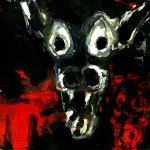The I Ching
The I Ching is an oracle in the form of a book. It is composed of 64 hexagrams (all the possible permutations of six lines made up of individual broken or unbroken lines) and these hexagrams represent all the possible situations one might encounter in a lifetime. Of course, any given situation will look very different depending on the location and the players involved but the energies at work do not change. It is possible for this book to be an oracle because the method of consulting it using yarrow sticks makes the outcome a perfect manifestation of the energies present at the moment you consult it and the hexagram and lines thus obtained are the appropriate information needed to help you understand the energies at work in this particular situation. And this is important for two reasons.
Firstly, if we are familiar with the forces at work in a given situation then we can choose to act in ways that are in accord with these forces thereby allowing us to be one with the way of things. Without this information, our actions may not be in accord with these forces resulting in the experience of suffering and frustration as a result of our actions making things worse as the energies we set in motion conflict with the way of things. When we consult the I Ching, it is possible to get one or more of six lines that will advise us concerning the appropriate action to take in this situation in order for the correct outcome to take place. In taking this appropriate action, or non action as the case may be, we come to better understand the forces at work and allow the situation to resolve itself as the forces would dictate.
Secondly, as we become more familiar with the forces at work in our lives and their lawfully determined interactions, we begin to question our own part in all of this. We come to understand that we cannot make anything different than it is and if our actions result in desired outcomes, it is only because these actions were in accord with the forces at work in the situation. And if we are not this doer who has the power to exert its will on the world then who are we and to ask this question puts the final journey in motion.
This book is only interested in furthering our understanding of the true nature of the world in which we find ourselves. It cannot give you a yes or no answer to the question you pose when you consult it because it doesn’t matter what you do, it only matters that you pay attention to the consequences of an action so that you can come to understand how it all works. You cannot ask it whether to buy car A or car B because it doesn’t care which one you buy. You can only ask it what situation will you find yourself in if you buy car A and then consult it again about the situation if car B is chosen. And finally, it does not matter if you believe any of this is real or even possible because, if your journey is real, then what you receive from the oracle will either further you in this journey or be of no use and you can move on to other possibilities.
Suggestions –
1. Always use the sticks !!
2. The ritual is important. Try to keep still and pay attention to the count.
3. Frame the Question in your mind before you start. The more specific you cab be, the easier it will be to apply the hexagram to the situation.
4. Read the hexagram in both the front and back of the book.
5. Once you have read the material and tried to apply it to your question, close the book and let it go. What you are ready to get, you will get and what you are not ready to get will be waiting for you the next time you get the hexagram.
6. When you get a hexagram that doesn’t seem to have anything to do withe the question you asked, try to make sense out of it anyway. Sometimes what is really going on eludes us because we become so caught up in the melodrama.
7. Do not consult the I Ching unless you really want to know the truth.

Using the Yarrow Sticks
1. First throw
9 = 8 = 2 or
5 = 4 = 3
2. Second & third throws
8 = 2 or
4 = 3

